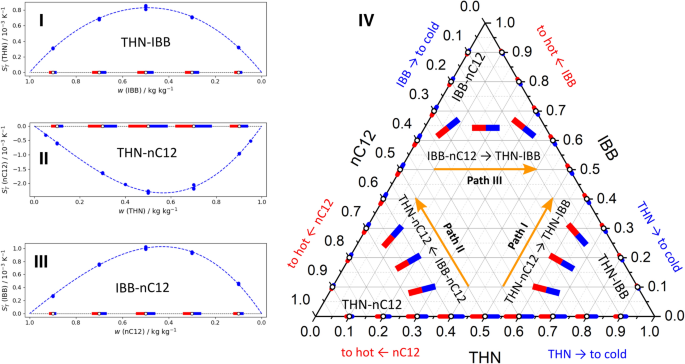

For a given point, the fraction of each of the three materials in the composition can be determined by the first. By drawing parallel lines at regular intervals between the zero line and the corner (Figure 5‑7.a), fine divisions can be established for easy estimation of the content of a species.

The percentage of a specific species decreases linearly with increasing distance from this corner, as seen in Figure 5‑7. The concentration of each species is 100% (pure phase) in its corner of the triangle and 0% at the line opposite it. The first method is an estimation based upon the phase diagram grid. There are three common methods used to determine the ratios of the three species in the composition. The vertexes represent the pure components, and the sides of equilateral triangle are scaled to represent the binary compositions of the three possible pairs. The volume percentage is used only when there is not significant volume change during the mixing. Compositions could be represented in ternary diagram as weight, mole or volume percentage. Every point on a ternary plot represents a different combination of the three components. A ternary diagram for hypothetical components A, B and C is shown in Figure 5‑7.The phase behavior on ternary diagram is plotted at fixed pressure and temperature and If these three components were miscible at that special temperature and pressure then no multiphase region would appear on the diagram. The advantage of using a ternary plot for depicting compositions is that three variables can be conveniently plotted in a two-dimensional graph and mixture of different components can be easily represented.

Ternary or triangular phase diagrams can be used to plot the phase behavior of systems consisting of three components by outlining the composition regions on the plot where different phases exist. Fundamentals of Fluid Flow in Porous MediaĬhapter 5 Miscible Displacement Fluid Phase Behavior: Tertiary Diagram


 0 kommentar(er)
0 kommentar(er)
